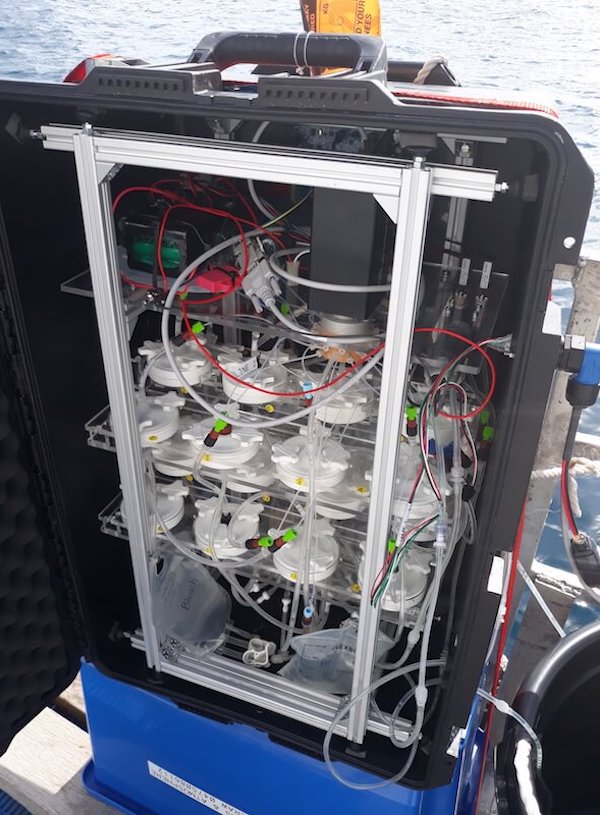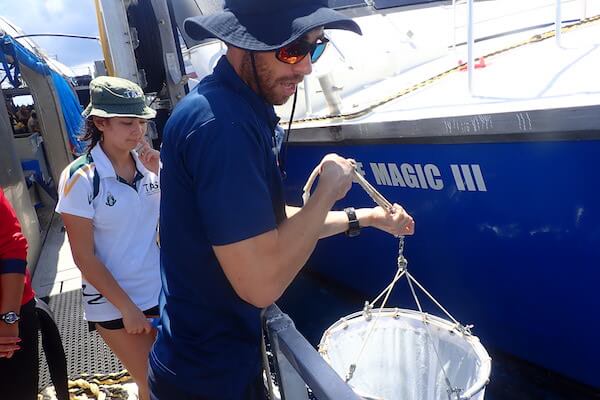Using environmental DNA (eDNA) to detect Crown-of-Thorns Starfish
Forensic science approach in using environmental DNA (eDNA) to detect crown-of-thorns starfish on the Great Barrier Reef.
Crown-of-Thorns starfish (CoTS) undergoes boom and bust cycles on the Great Barrier Reef leaving large areas of coral dead in its wake during outbreak events.
The current method for detecting CoTS outbreaks are surveys using manta tows and other transect techniques. By the time these methods detect outbreaks, the outbreak is usually well established.
A possible way of early detection of CoTS outbreaks is to survey the plankton. CoTS like the majority of marine life has a planktonic larval stage that later settles onto a coral reef and develop into a starfish. However, it is almost impossible to determine CoTS larvae under a microscope from any other type of starfish or echinoderm larvae.
The Australian Institute of Marine Science (AIMS) have perfected the method to determine the quantity of larval CoTS eDNA in a plankton sample (see link below). CoTS eDNA detection has been successfully utilised to map the distribution of CoTS larvae in plankton samples across the Great Barrier Reef including a long term monitoring site at the Moore Reef Marine World pontoon (see image below).
This research combined with our work in juvenile CoTS ecology provided valuable insight into the spawning time and frequency of CoTS on the GBR and was published in the peer review journal Marine Biology.
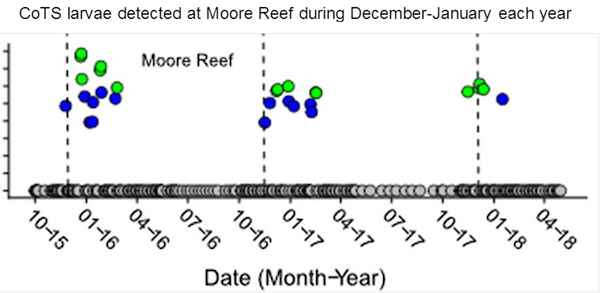
Uthicke S, Fisher EE, Patel F, Diaz-Guijarro B, Doyle JR, Messmer V, Pratchett MS (2019) Spawning time of Acanthaster cf. solaris on the Great Barrier Reef inferred using qPCR quantification of embryos and larvae: do they know it’s Christmas? Mar Biol 166
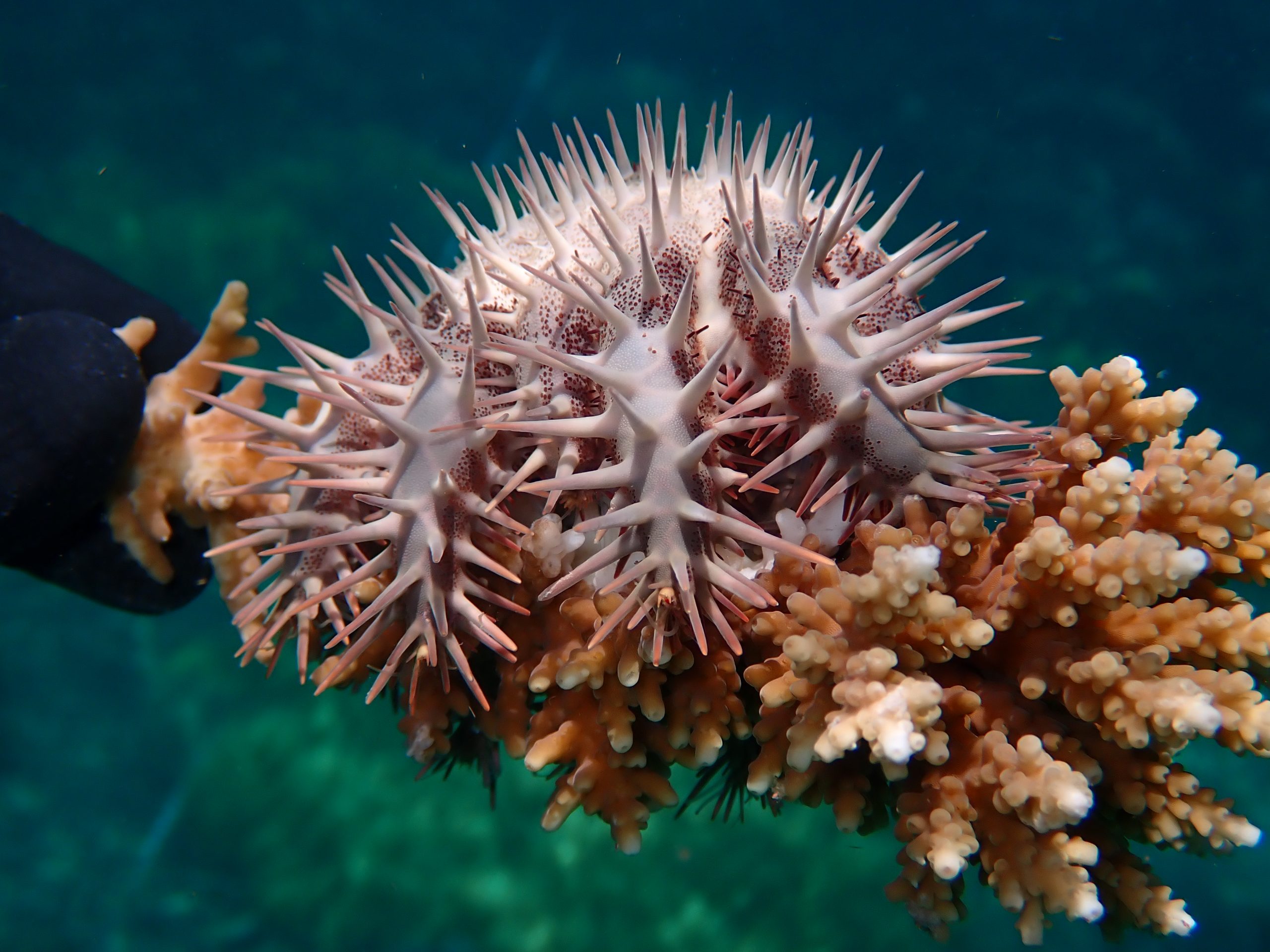
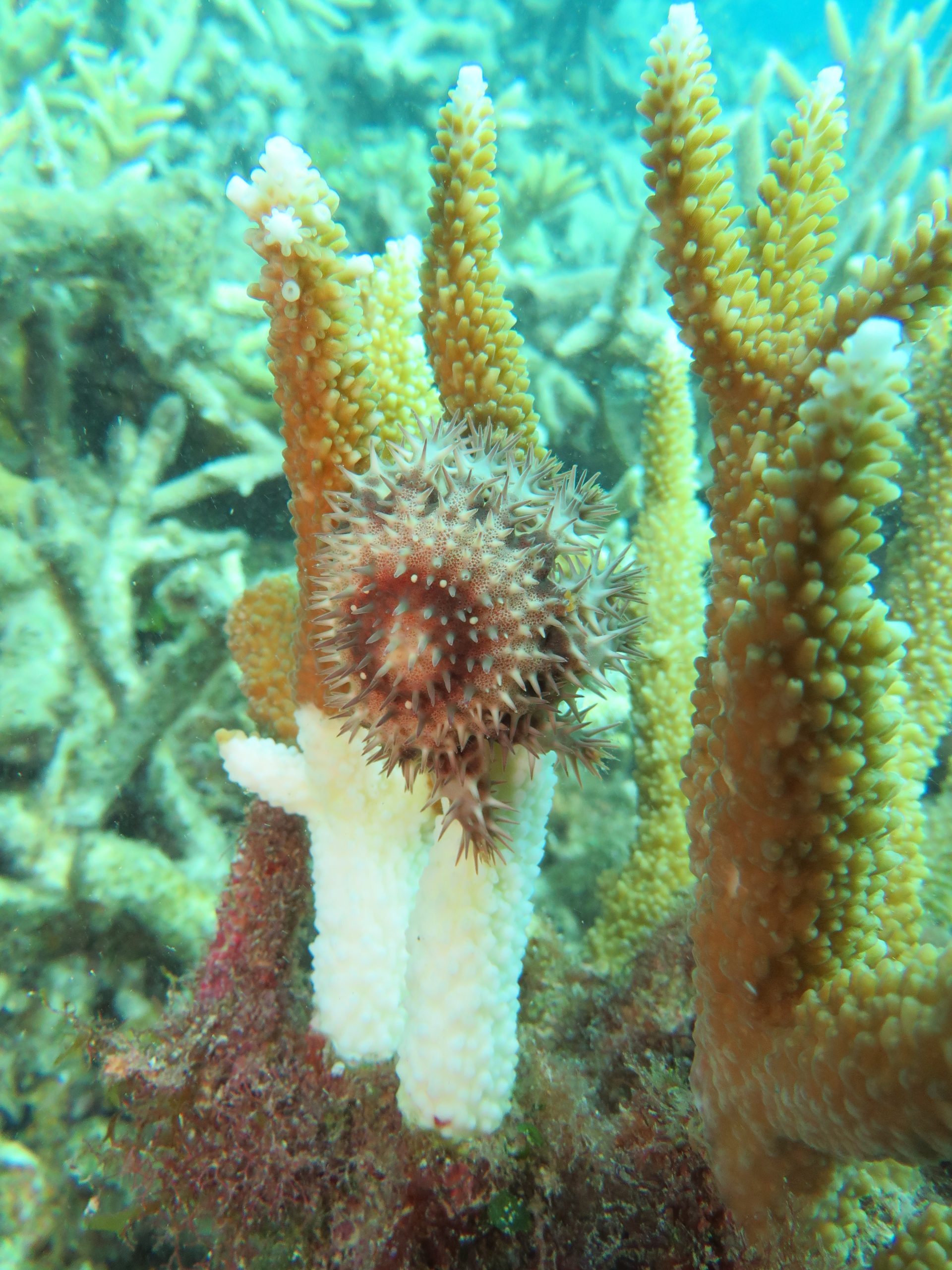
Relevance
We are now developing a CoTS eDNA detection method for adult CoTS (dipstick method) and envisage that monitoring of both CoTS larvae eDNA and CoTS adult eDNA along with visual surveys will provide the best opportunity for early warning before outbreak densities occur. The advantage would be to initiate culling efforts early to weaken downstream population booms, in other words, early detection leads to early intervention.
We have just started extending our collaboration with AIMS and CSIRO (Commonwealth Scientific Industrial Research Organisation) to trial automatic eDNA samplers at the Reef to further investigate the occurrence of CoTS larvae at Moore Reef. This technology has numerous applications in understanding coral reef ecosystem dynamics.
